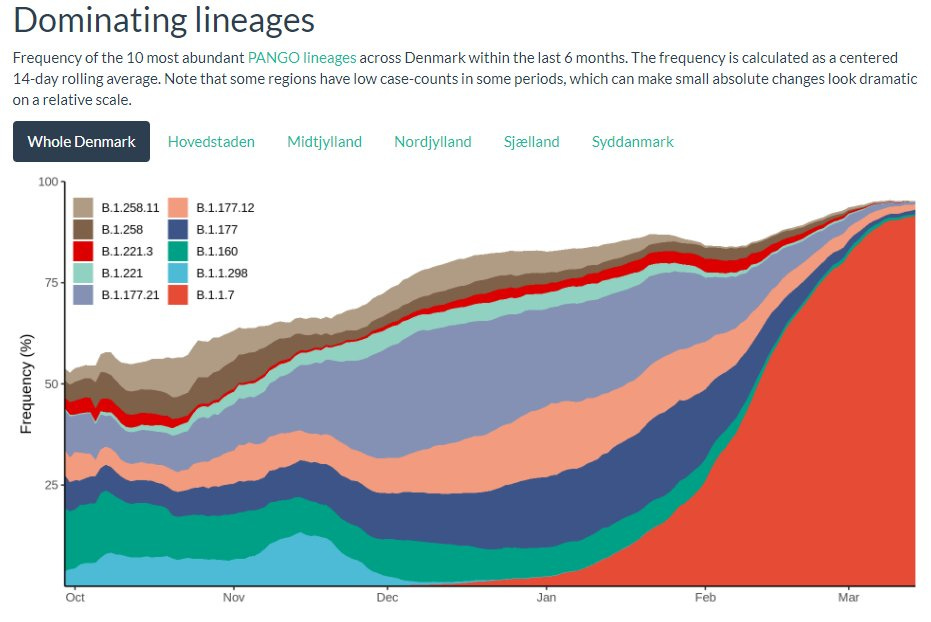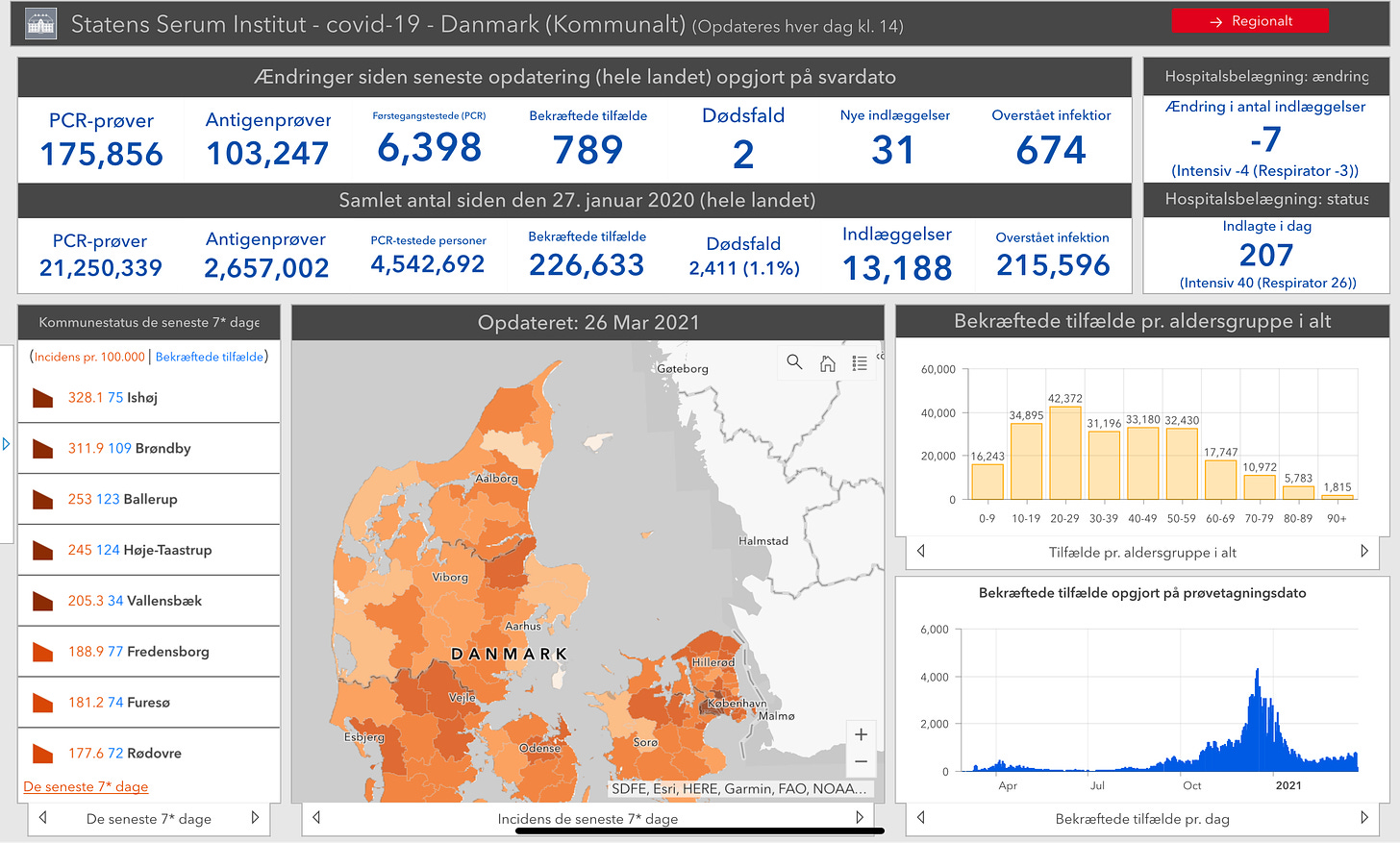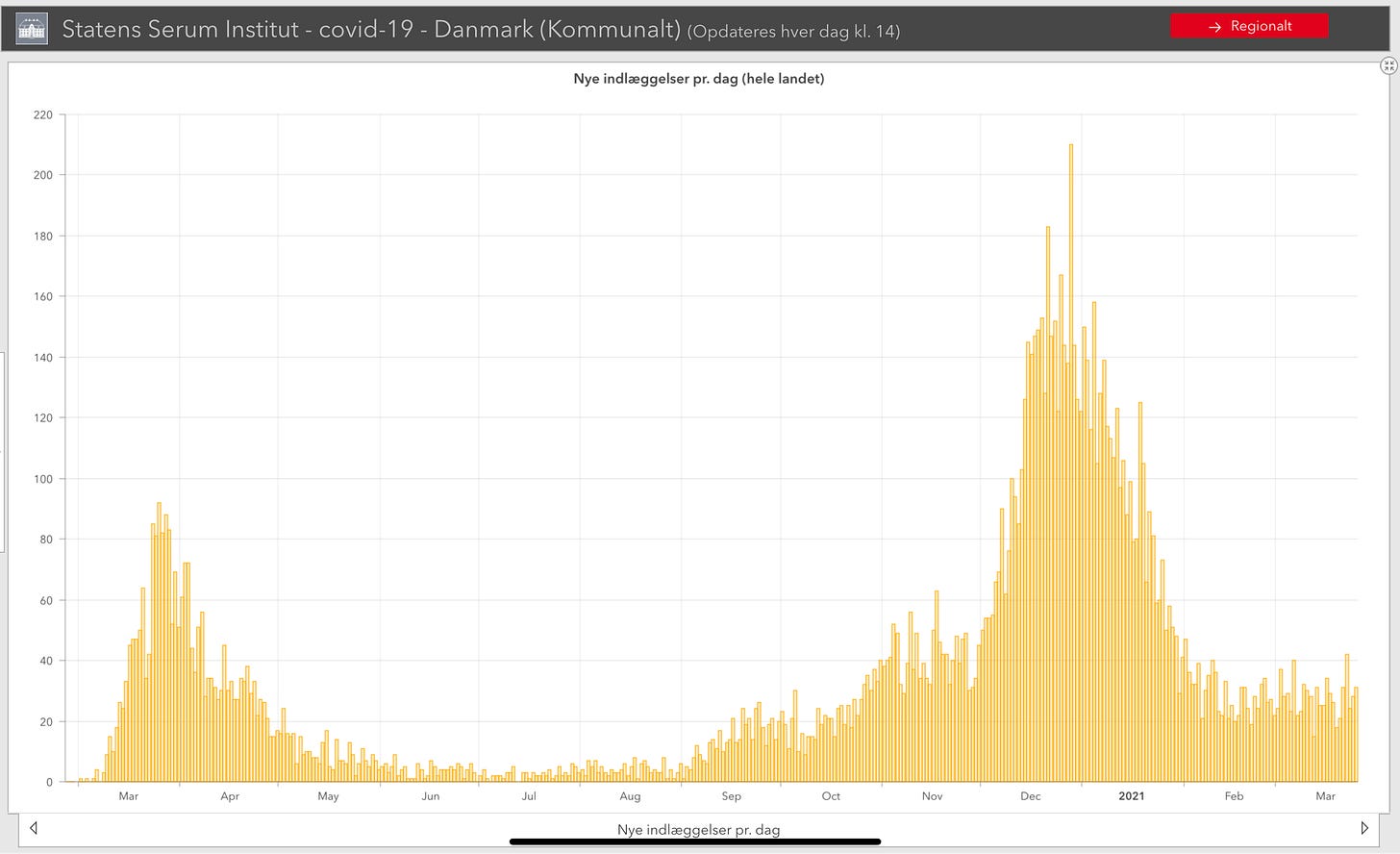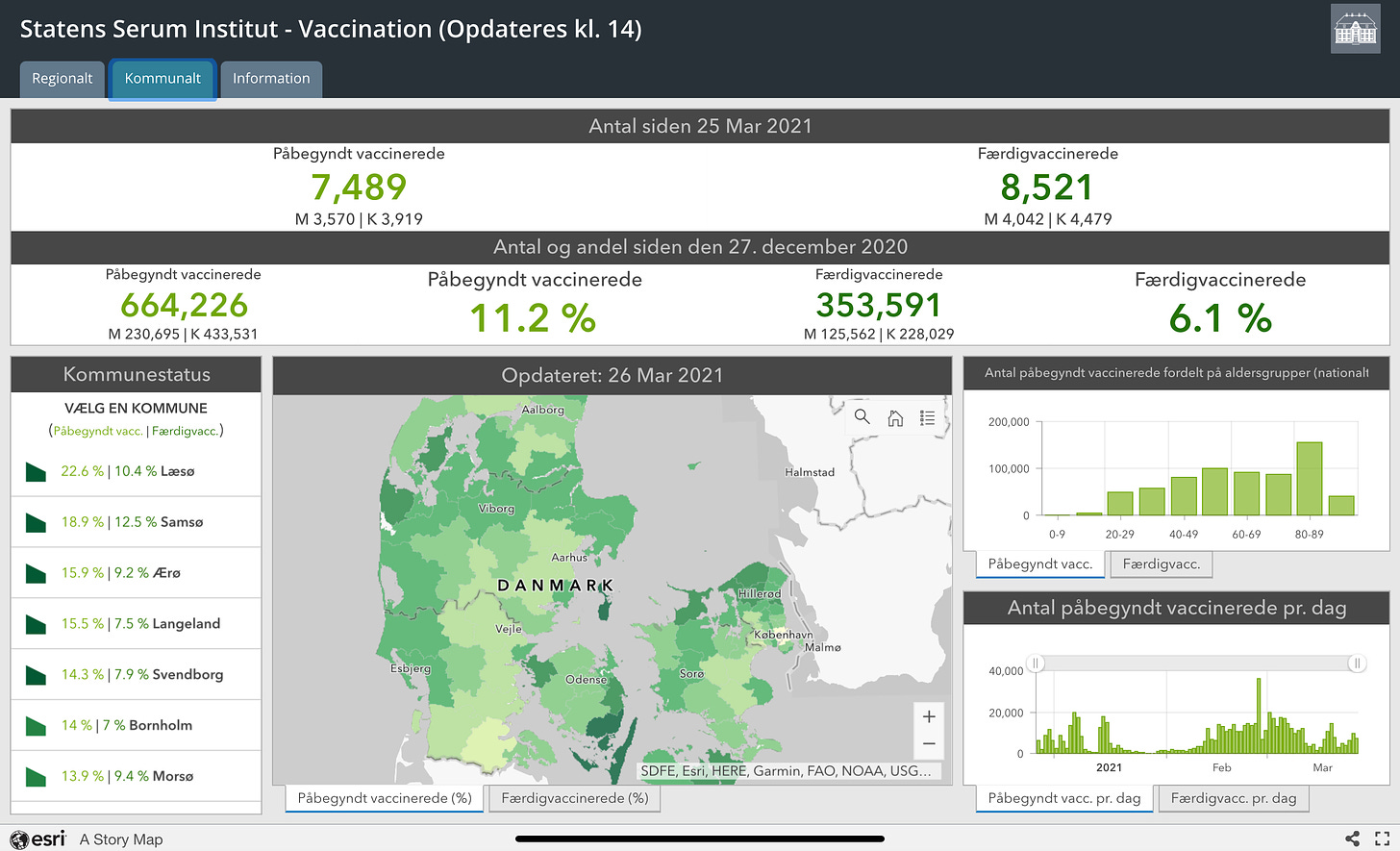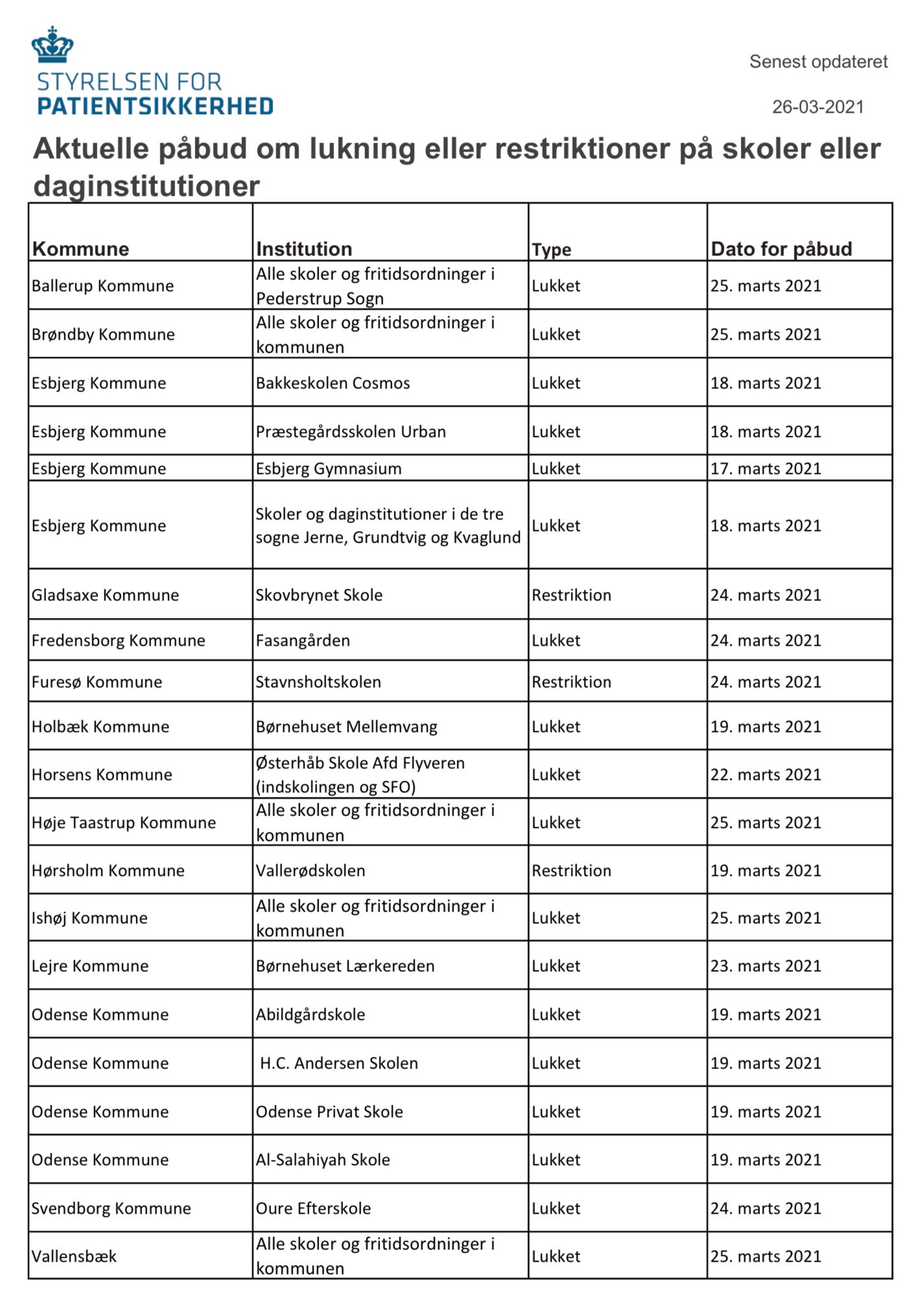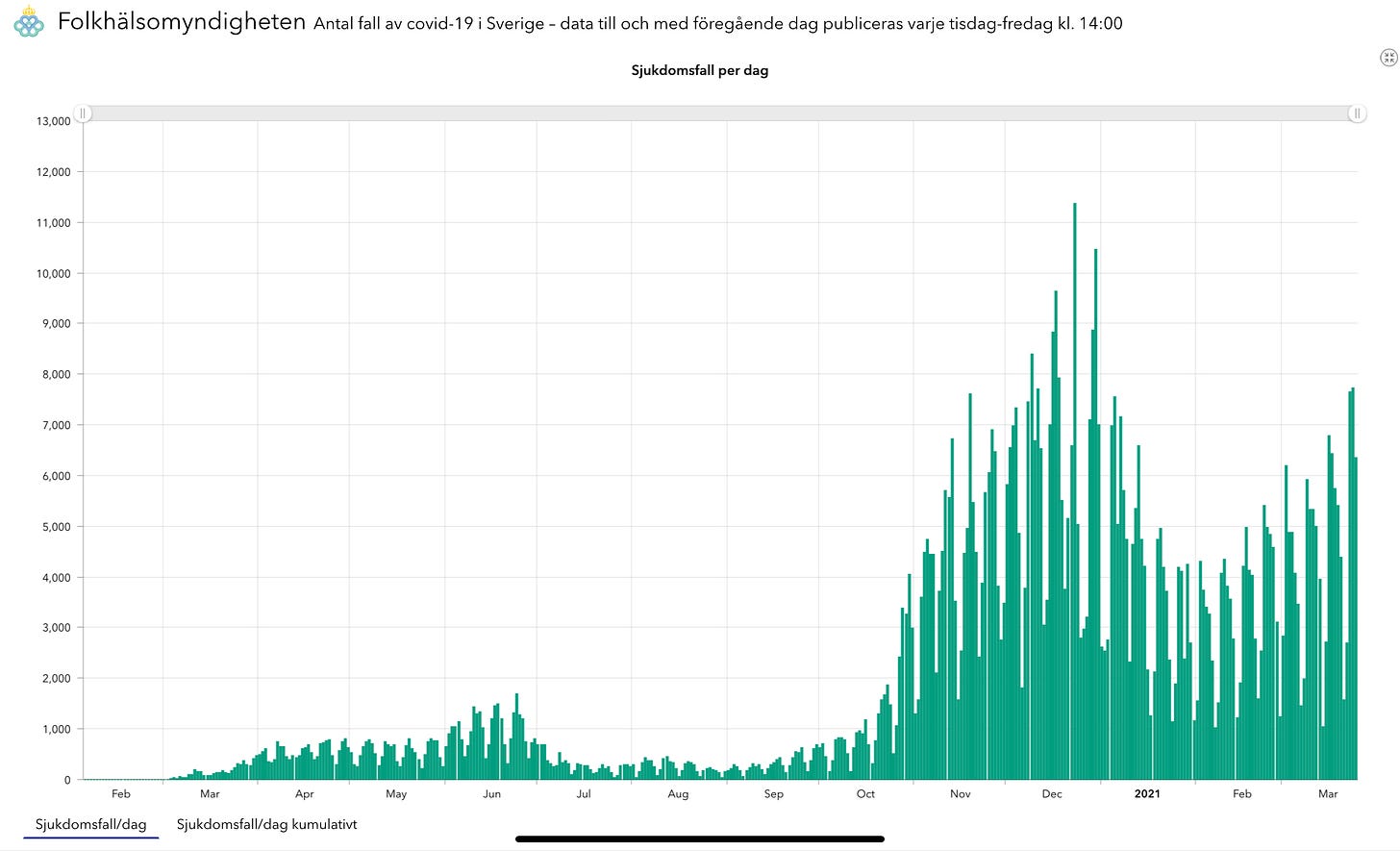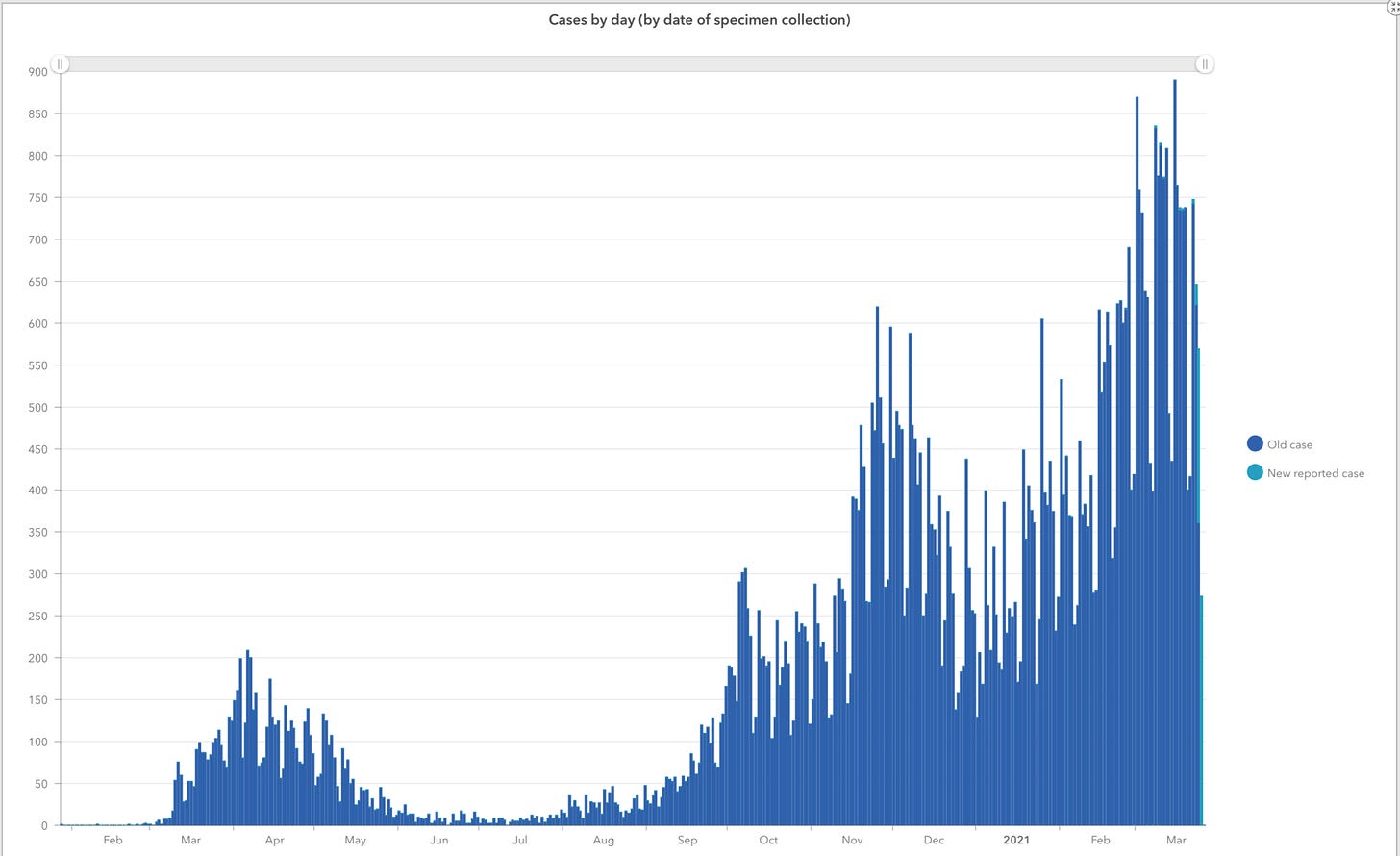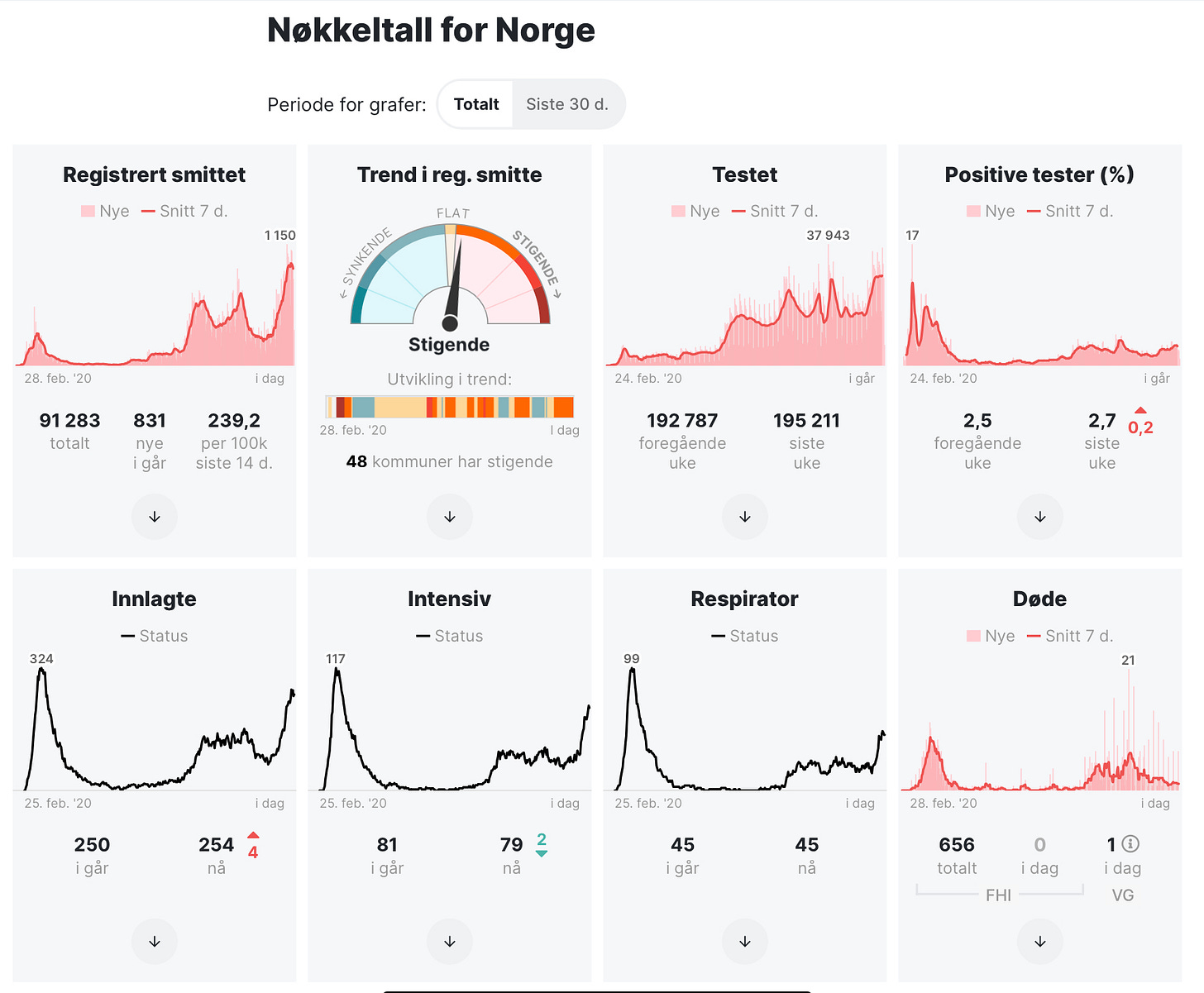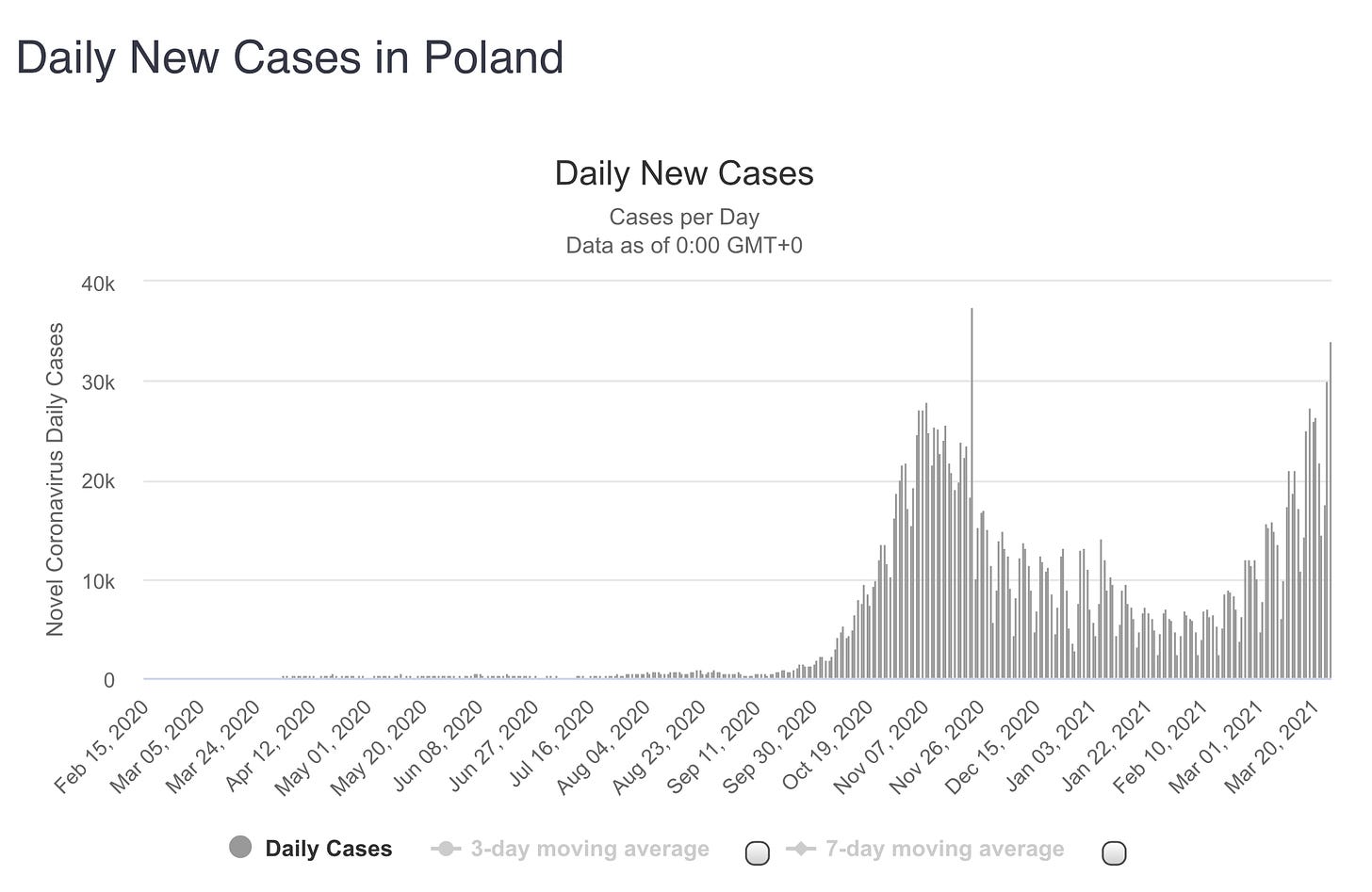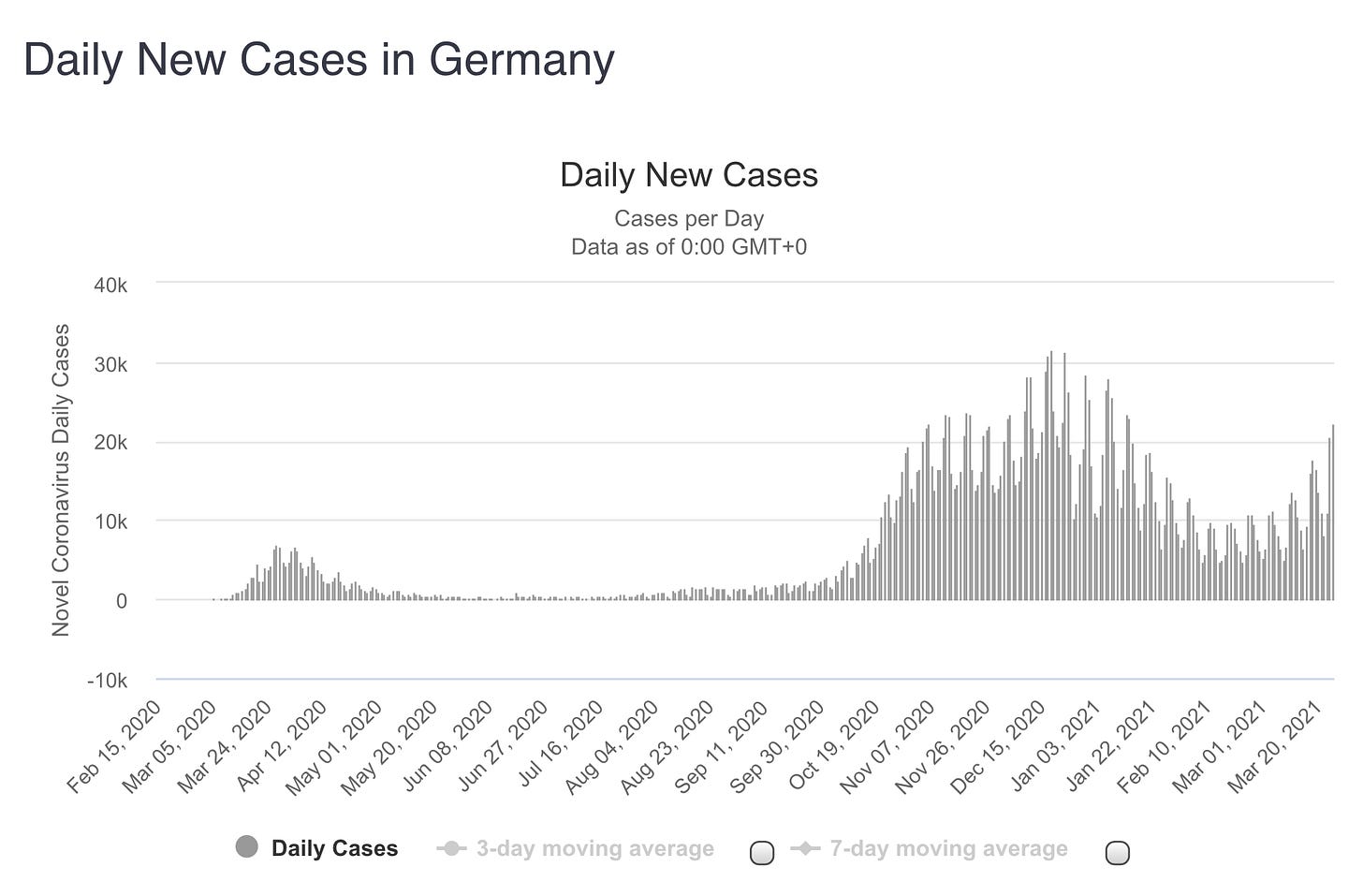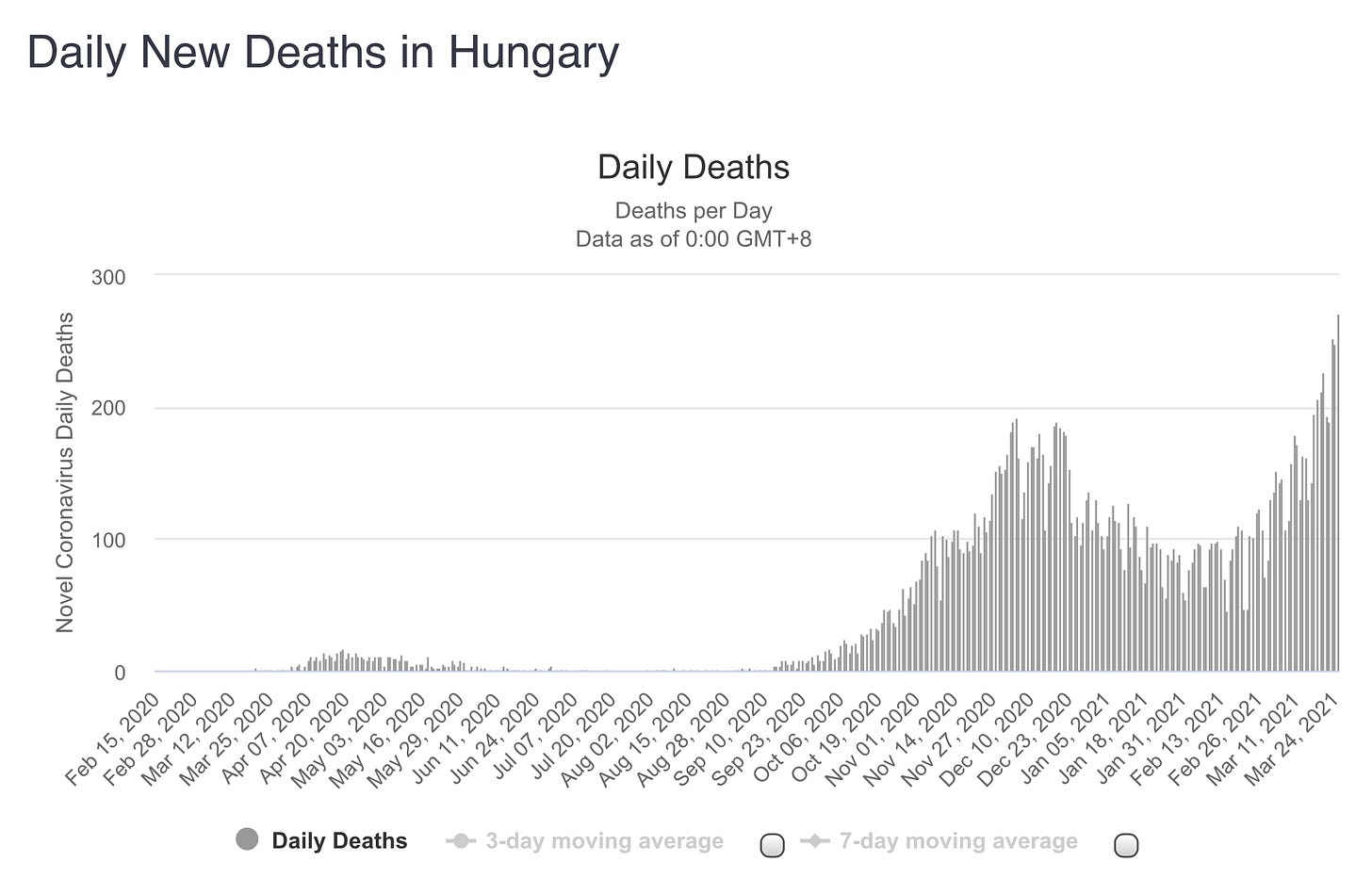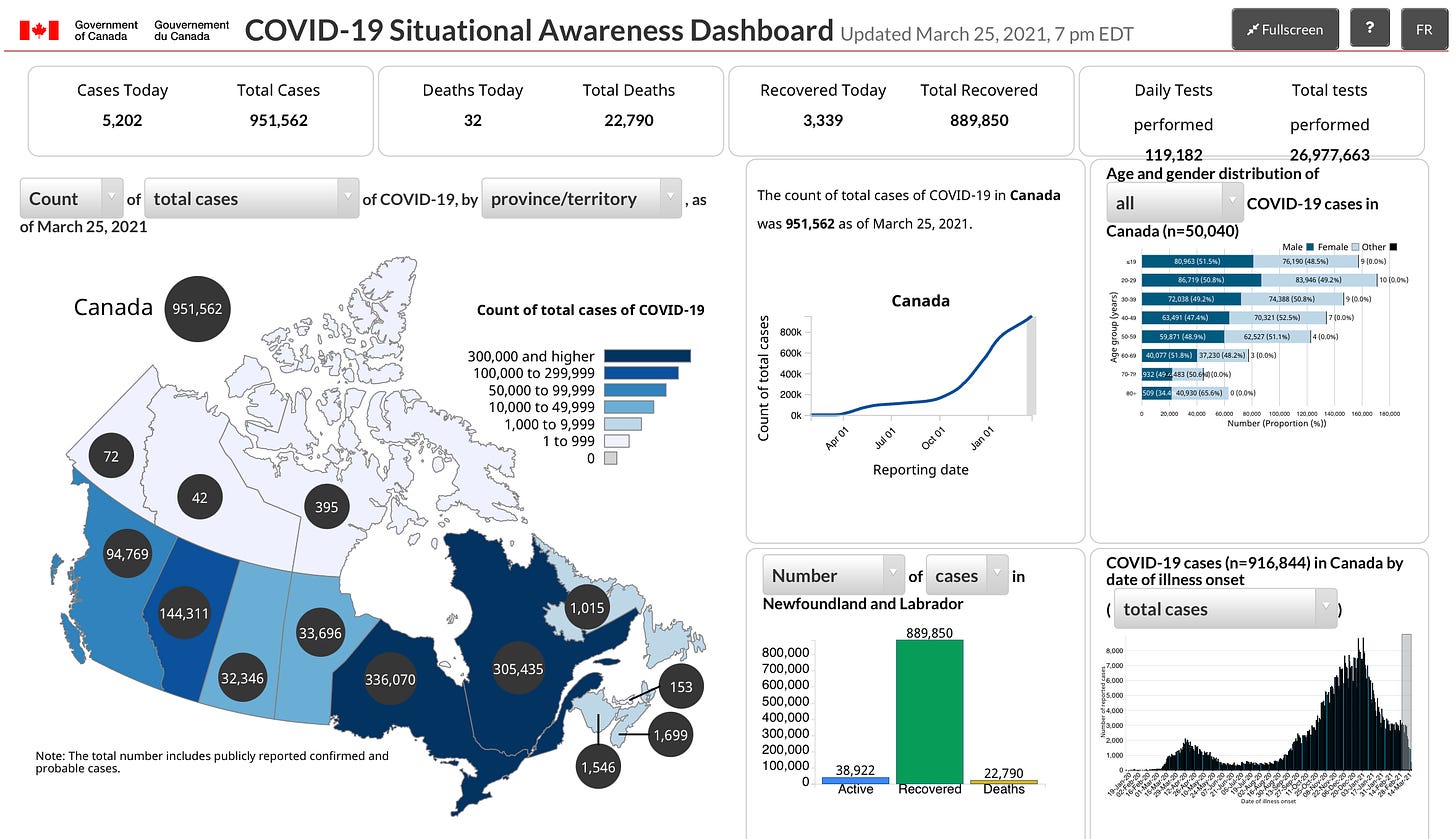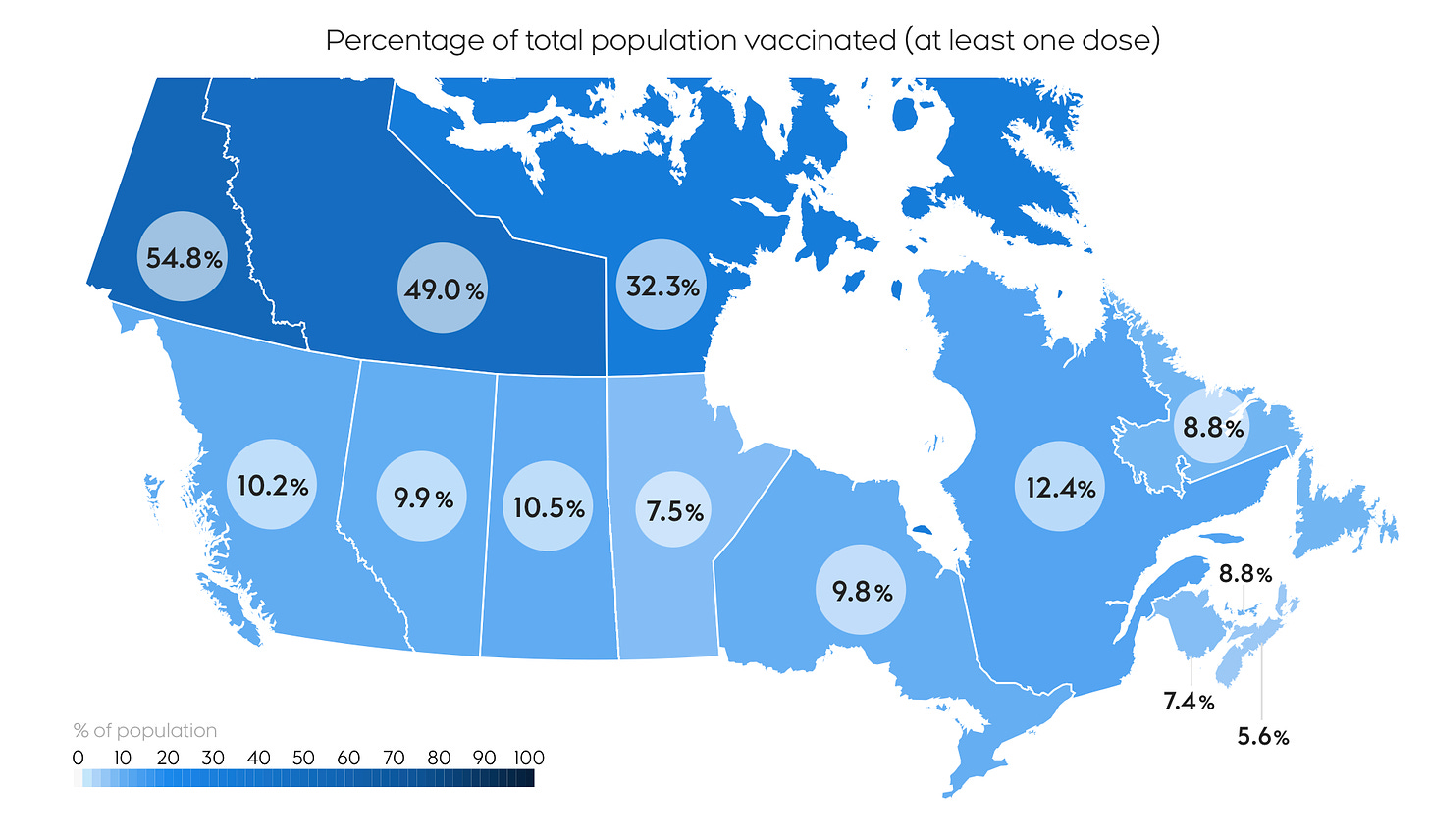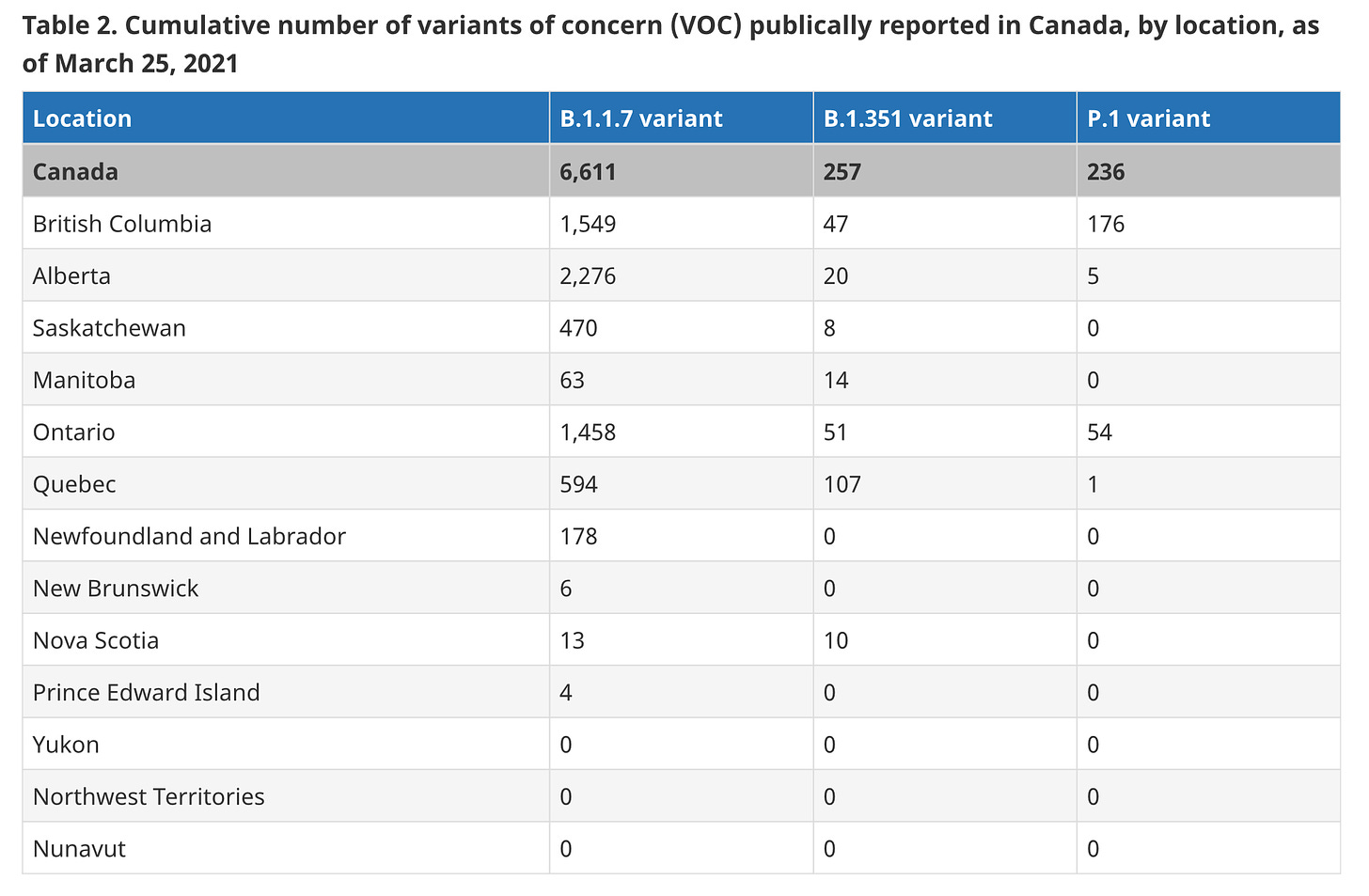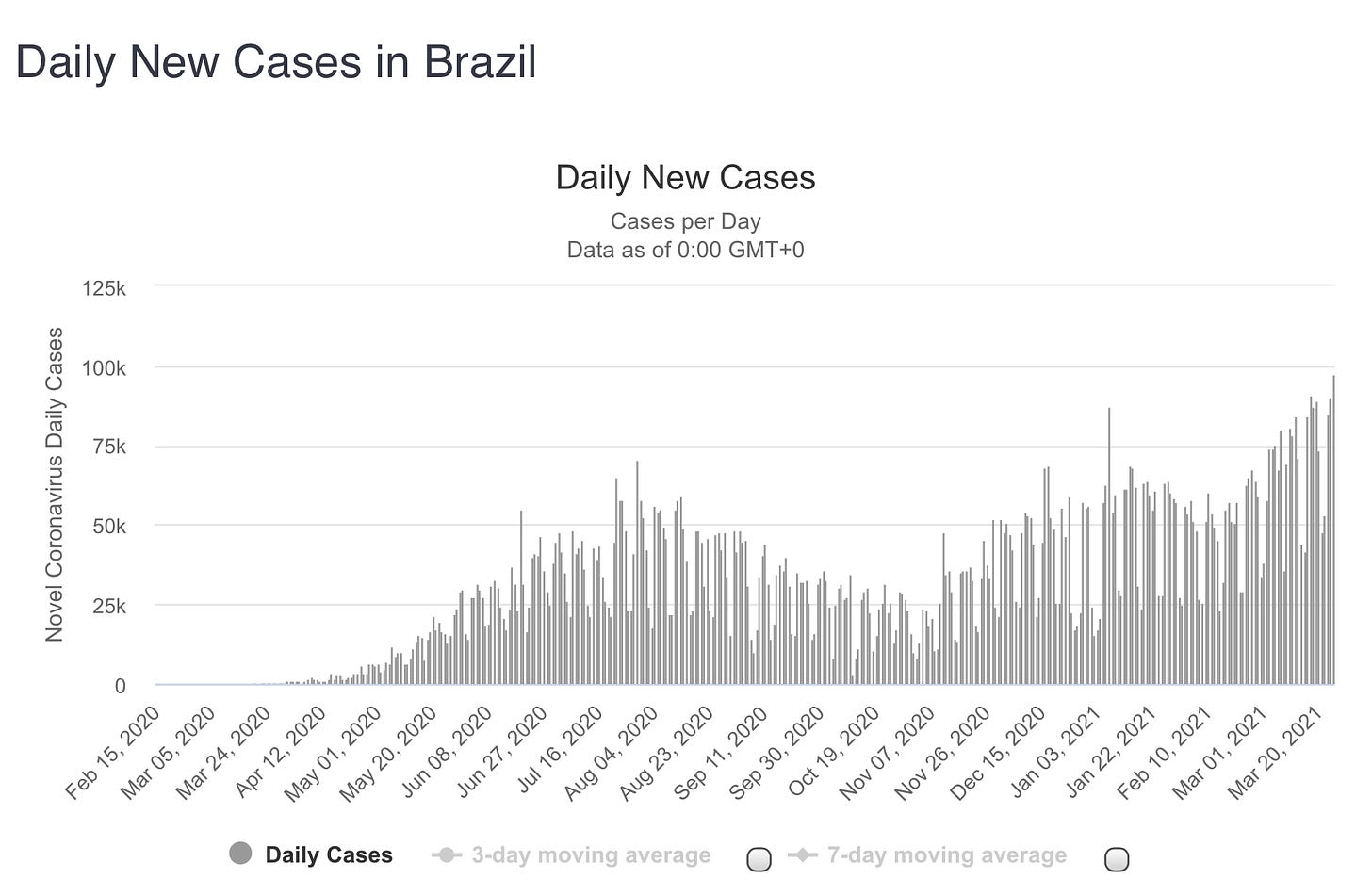🇩🇰
Denmark’s Ministry of Foreign Affairs has extended travel restrictions until at least April 20th. All travel outside of Denmark remains discouraged. This includes business travel. The requirement of having a negative COVID test no more than 24 hours old to get on a plane, or no more than 48 hours old to cross from the German border regions to Denmark remain in place.
-
The total number of the Brazilian P1 COVID variant infections in Denmark is now seven, up from three. This is according to Mads Albertsen, co-founder of DNASense, and leader of a team in Aalborg that sequences positive samples from across Denmark.
Denmark is reporting 789 COVID infections and two more coronavirus deaths in the last day.
Yesterday, 360,775 total corona tests were administered, 187,414 PCR and 173,361 rapid. For PCR tests only, the positivity percentage is 0.45%.
COVID hospitalizations (207) are down (-7), the number of infected people in an ICU (40) is also down (-4), while the number of people on a ventilator (26) also edged downward (-3).
On the vaccination front to date, 664,226 1st dose (11.2% of the population) vaccinations have been administered and 353,591 people (6.1%) are now fully vaccinated. Yesterday 16,010 vaccinations were administered, no sign of a big upward surge yet.
The Staten Serum Institut has updated vaccination efforts among the different target groups. Below is the percentage of completed vaccinations by target group:
Target Groups 1-3:
88% of all nursing home residents
70% of people over 65 receiving care in their own home
78% of people over the age of 85
Target group 4:
24% of social and healthcare workers have been fully vaccinated and 61% have had their first shot.
Target groups 5-6:
33% of vulnerable people considered at high COVID risk have been fully vaccinated and 72% have had the first inoculation. For their family members, the numbers are 2% and 17%.
Target group 7:
vaccinations begin this week for all people aged 80 to 84 years old.
-
Police on Fyn are identifying “hot spots” in Odense and Svendborg. You might remember these from the summer. Police monitor areas of concern for large gatherings, signage is posted, and if they see groups larger than the assembly ban allows, they close the area down. As of March 30th, hot spots include Munke Mose and Eventyrhaven in Odense and Christiansminde Strandpark in Svendborg.
The assembly ban for outdoor gatherings is groups of no more than ten.
-
The Agency for Patient Safety in Denmark has put out an updated list of all the COVID related school closures today.
🇸🇪
Sweden has added 6,328 infections and another 29 corona deaths since yesterday’s update.
To date, 1,034,547 1st dose (12.6% of the population) and 447,606 2nd dose (5.5%) vaccinations have been administered.
🇫🇮
Finland has registered 512 infections and two more deaths since yesterday’s update.
COVID hospitalizations (254) have jumped (+26) ICU numbers (59) are unchanged.
To date, 809,974 1st doses (14.5% of pop) and 88,234 2nd vaccine doses (1.6%) have been administered.
🇳🇴
Norway has added 1,134 infections and had no new virus deaths.
COVID hospitalizations (254) are up (+4), ICU numbers (79) dipped (-2), and the number of people on a ventilator (45) remains unchanged.
To date, 865,800 1st dose vaccinations (11.05% of the population) have been administered while 225,412 people (5.01%) are now fully vaccinated.
-
Norway has followed Denmark in continuing its suspension of the AstraZeneca vaccine for another three weeks, until at least April 15th.
Geir Bukholm, Director of Infection Control at the Norwegian National Institute of Public Health says with more reports of severe blood clotting and four deaths since March 11th there are too many unanswered questions.
“We believe it is necessary to carry out more investigations into the current incidents, so that we can give the best possible advice on vaccination to the population in Norway.”
Bukholm says the investigation will seek to find out if there is a causal link to the AstraZeneca vaccine. The investigation also aims to determine the nature of the connection, if any, and finally, if there are any contributing biological factors among patients with severe blood clotting and low platelet count.
The continued AstraZeneca suspension means the overall vaccination schedule in Norway will be delayed by up to two weeks. The Norwegian Institute of Public Health says people who have received a 1st AstraZeneca dose will not get a 2nd until the situation is clarified.
🇪🇺
The E.U. drug watchdog, the European Medicines Agency, approved new facilities in the Netherlands, Germany, and Switzerland for the production of vaccines, or the active ingredients in them, for AstraZeneca, Pfizer, and Moderna respectively. The hope is these facilities will help speed up vaccine production.
Perhaps the most significant change approved by the EMA today was to allow Pfizer vaccines to be stored between -25 to -15˚C, about the temperature of standard pharmaceutical freezer, for a period of two weeks. Currently speciality freezers are required with the vials stored in temperature between -90 to -60˚C. This should help speed up vaccine distribution.
-
The EMA is investigating whether the way vaccinations are administered could be cause for cases of severe blood clotting that may be linked to the AstraZeneca vaccine.
-
The European Union has brought the boom down on AstraZeneca, informing the company it must fulfill its vaccine delivery obligations to Europe before exporting doses elsewhere.
European Commission President Ursula von der Leyen.
“I think it is clear for the company that first of all it has to catch up, has to honour the contract it has with the European member states, before it can engage again in exporting.”
AstraZeneca has drawn the ire of the bloc by cutting its promised first quarter vaccine shipments by 75% to just 30 million doses. According to the E.U. Commission earlier this week, the vaccine maker isn’t even close to accomplishing delivering even that.
🇵🇱
Poland levied a number of new restrictions yesterday as its COVID infection numbers continue to rise. Polish Health Minister Adam Niedzielski said his country is “in a crisis situation." Over 70% of critical care beds are now occupied and Poland’s public health system is approaching capacity. Among the restrictions, large stores, hairdressers, beauty parlours, and kindergartens will close. Caps will also be placed on how many people can be in stores and churches.
Today, Poland recorded another 35,143 new infections and 443 more virus deaths as it sees steep infection increases.
🇩🇪
As of midnight Sunday, anyone flying into Germany will have to have a negative COVID test no more than 48 hours old in order to board their flight. Flight crew are exempt.
Germany could classify France as a high risk zone as early as today. It would mean tightened border controls and the requirement of a mandatory quarantine to enter the country.
Today it reported another 22,274 infections and 205 more virus deaths, numbers not seen since January.
🇭🇺
Another bad day in Hungary with 11,265 new infections and another 275 corona deaths. That marks the most infections of any day in the pandemic yet and its deadliest day to date.
🇨🇦
Yesterday Canada registered 5,202 new infections as its COVID numbers continue to rise. Another 32 corona deaths were reported yesterday as well.
On the vaccination front to date, 3,934,944 1st vaccine doses (10.35% of the population) have been administered while 649,006 people are now fully vaccinated against the coronavirus.
The number of corona variants across Canada continues to grow with another 729 U.K. variant infections and 44 more P1 variant cases. 36 of the P1 variant infection are in B.C. Alberta, which leads all provinces with the U.K. variant, added another 390 in 24 hours.
New COVID modeling unveiled today by the Public Health Agency of Canada projects daily infections will increase to 12,000 a day as more contagious variants take hold. Canada’s Chief Public Health Officer Dr. Theresa Tam is warning that people need to buckle down and reduce their social contacts to reduce infection spread. She says vaccinations are not keeping pace with virus spread and that “COVID still has a few tricks in store.”
In Ontario today, Health Minister Christine Elliott tweeted, “Ontario is reporting 2,169 cases of COVID19 and over 53,400 tests completed. Locally, there are 682 new cases in Toronto, 397 in Peel, 254 in York Region, 129 in Ottawa, 123 in Durham and 122 in Hamilton. As of 8:00 p.m. yesterday, 1,838,592 doses of the COVID-19 vaccine have been administered.” There were also 12 more deaths.
Quebec registered 950 new infections and seven more deaths today. There are 481 people in hospital with 115 in an ICU.
In Atlantic Canada, New Brunswick is bringing down more restrictions as it reports 30 more infections yesterday. Nova Scotia has five infections today.
Manitoba registered 111 infections and one more death yesterday.
There were 168 new infections and two more deaths in Saskatchewan yesterday.
The signs are not positive in Alberta. Yesterday it saw 764 new infections, 191 of which were variants of concern (roughly 21%). It also reported three more virus deaths. There are 294 people in hospital, including 55 in an ICU.
B.C. reported 800 new infections, the highest number since the very height of the second wave, as its infection curve begins to rise sharply. There were five more deaths and hospitalizations are also increasing.
🇧🇷
Brazil remains an absolute disaster with a record high 100,158 new infections yesterday, the first time ever daily infections have surpassed 100,000. It recorded another 2,639 coronavirus deaths yesterday.




